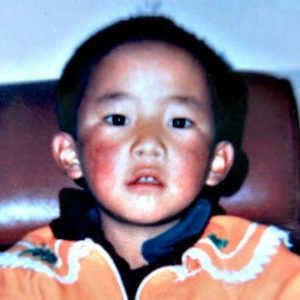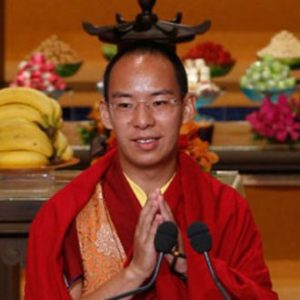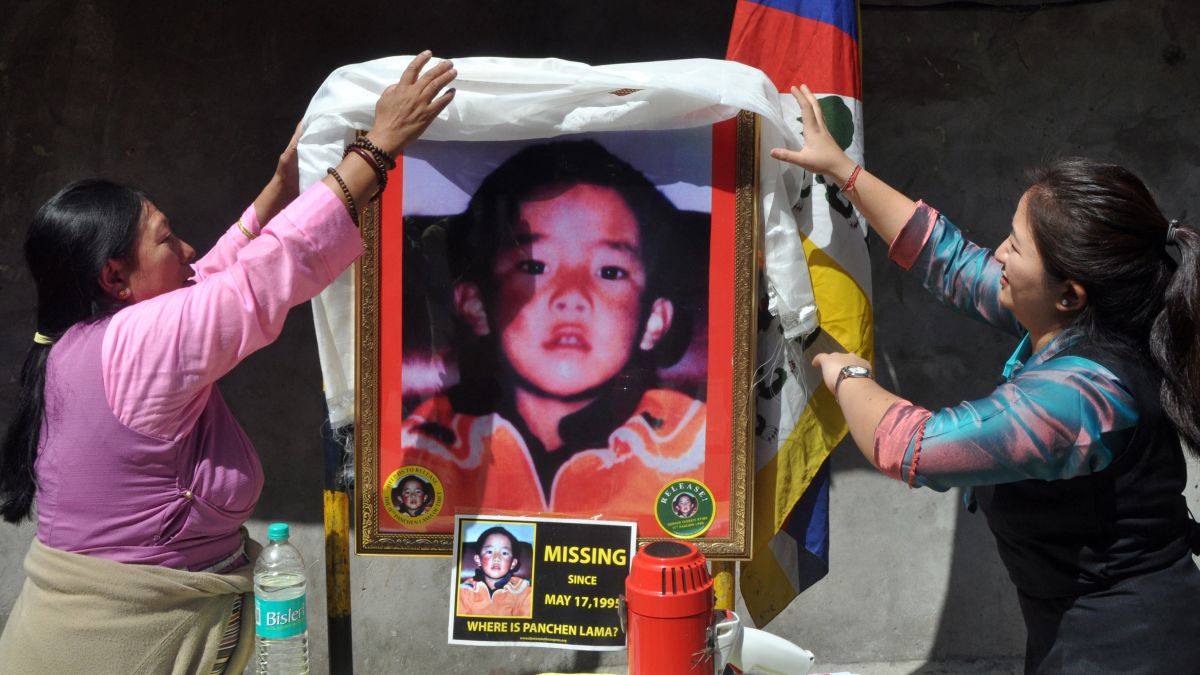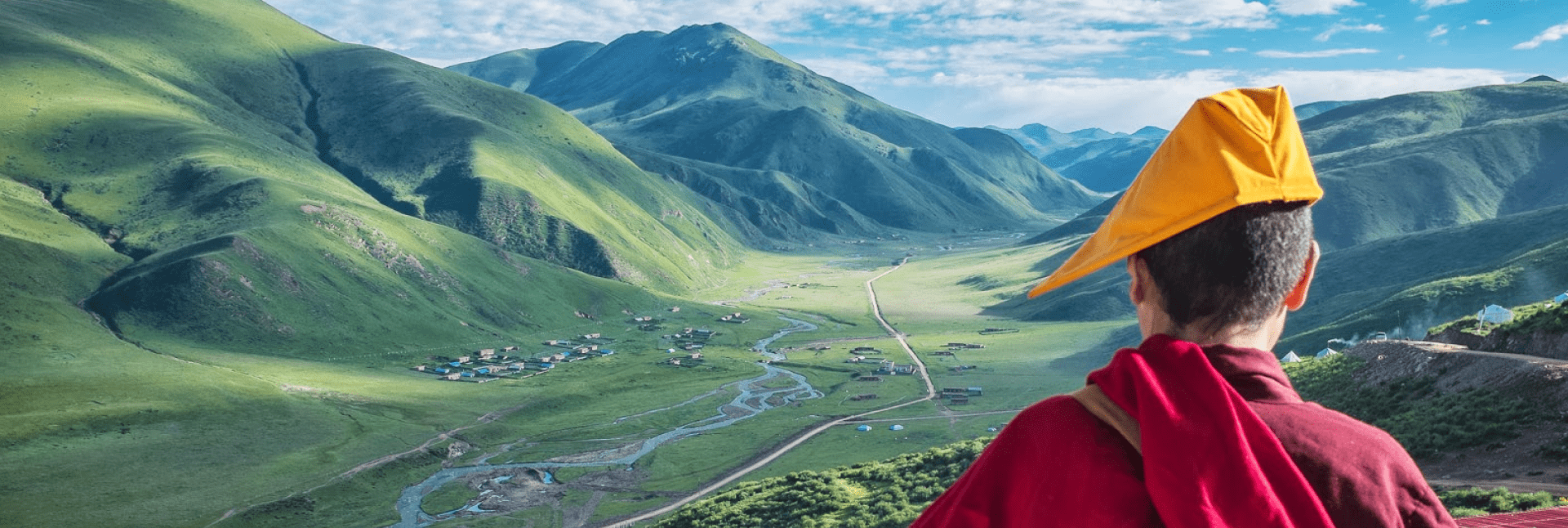On 25 April 1995, Gedhun Choekyi Nyima turned six years old. Barely a month later, he became the world’s youngest political prisoner. He has been missing for 27 years.
Gedhun Choekyi Nyima is the Panchen Lama, the second-highest authority in Tibetan Buddhism after the Dalai Lama.
To many Tibetan people, he is a figure who commands deep respect and reverence. To the Chinese government, which has occupied Tibet since invading it in 1950, the young Panchen Lama was a potential threat to their rule.
Take Action
Who is the Panchen Lama?

The only known photo of Gedhun Choekyi Nyima
The Panchen Lama is one of the most important figures in Tibetan Buddhism, second only to the Dalai Lama himself. Perhaps his most important job is the role he plays in recognising the next reincarnation of the Dalai Lama, who then, in turn, finds the reincarnated Panchen Lama. This tradition has endured for centuries.
The previous Panchen Lama (Lobsang Trinley Lhundrup Choekyi Gyaltsen) spoke out against Chinese rule many times and wrote a report chronicling Tibet’s famines in the 1960s. As a result, he spent more than eight years in jail and died in suspicious circumstances in 1989.
In 1995 a list of possible candidates for the next Panchen Lama was sent to the Dalai Lama (living in exile in India), and on 15 May he announced that Gedhun had been recognised as the 11th Panchen Lama. Two days later, the Chinese government abducted the child and his family. None of them have ever been seen or heard from again.
Why was he kidnapped?

Gyaltsen Norbu
Six months after Gedhun Choekyi Nyima’s abduction, Chinese authorities announced that they had found the so-called “real” reincarnation of the Panchen Lama. They named Gyaltsen Norbu, a Tibetan boy and the son of two Communist Party members, as the Panchen Lama.
The Chinese government’s selection for Panchen Lama laid bare their motivations in the kidnapping. Since his selection, Gyaltsen, who lives in Beijing, has only rarely visited Tibet. His visits are carefully stage-managed and heavily policed. He is a member of the Chinese People’s Political Consultative Conference (CPPCC), a top advisory body to China’s government, and a senior figure in China’s state-run Buddhist Association. Then, in a 2015 speech, he vowed to uphold “national unity”, the Chinese government’s term for opposing any change in Tibet’s status.
The abduction and replacement of the Panchen Lama is part of China’s efforts to ‘stabilise’ Tibet, by controlling its religion and breaking the Dalai Lama’s influence. Not only are they attempting to use their puppet Panchen Lama to control and influence Tibetans today, but when the time comes to find the reincarnation of the Dalai Lama they will use him to try and legitimise the appointment of their own pro-China candidate. For his role as a political tool, Gyaltsen Norbu is known by Tibetans as ‘Panchen Zuma’, meaning ‘ false Panchen’.
Where is the Panchen Lama now?
In 2019, to commemorate his 30th birthday, a forensic artist produced a reconstruction of how Gedhun Choekyi Nyima could look now. The image was painstakingly constructed in consultation with Tibetans, using exhaustive information. The artist, Tim Widden, told Free Tibet:
“No age progression is going to be a hundred percent accurate… however in terms of the proportions of the face, I’d expect there to be a good level of congruence between the age progression and what he looked like now.”
The BBC One Show revealed the image in a broadcast on 23 April 2019, and the Tibetan community hopes that the image will spark renewed interest in his case, putting pressure on the Chinese government.
Take action
Political pressure is key to ensuring the safe release of Gedhun Choekyi Nyima, the 11th Panchen Lama, and his family. Send a message urging the EU and UK to use their power and influence to push for Gedhun’s immediate release.
Take action


